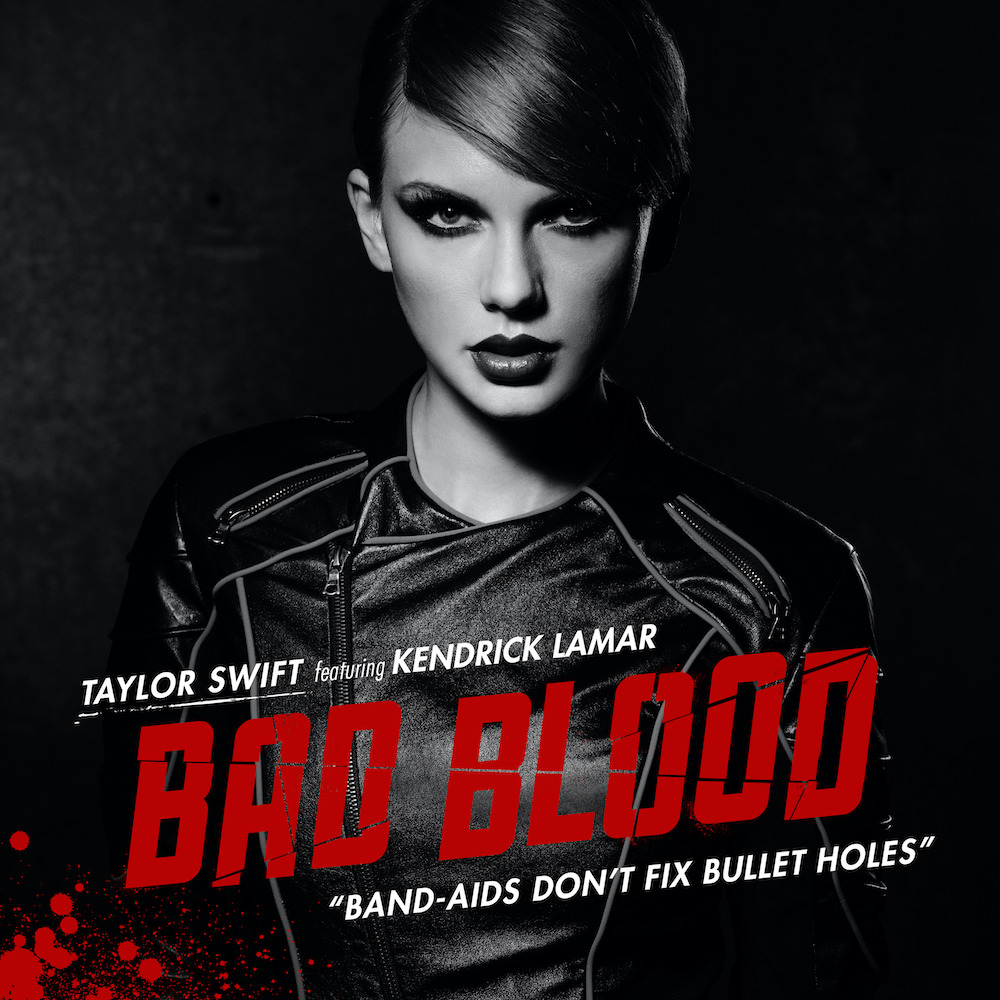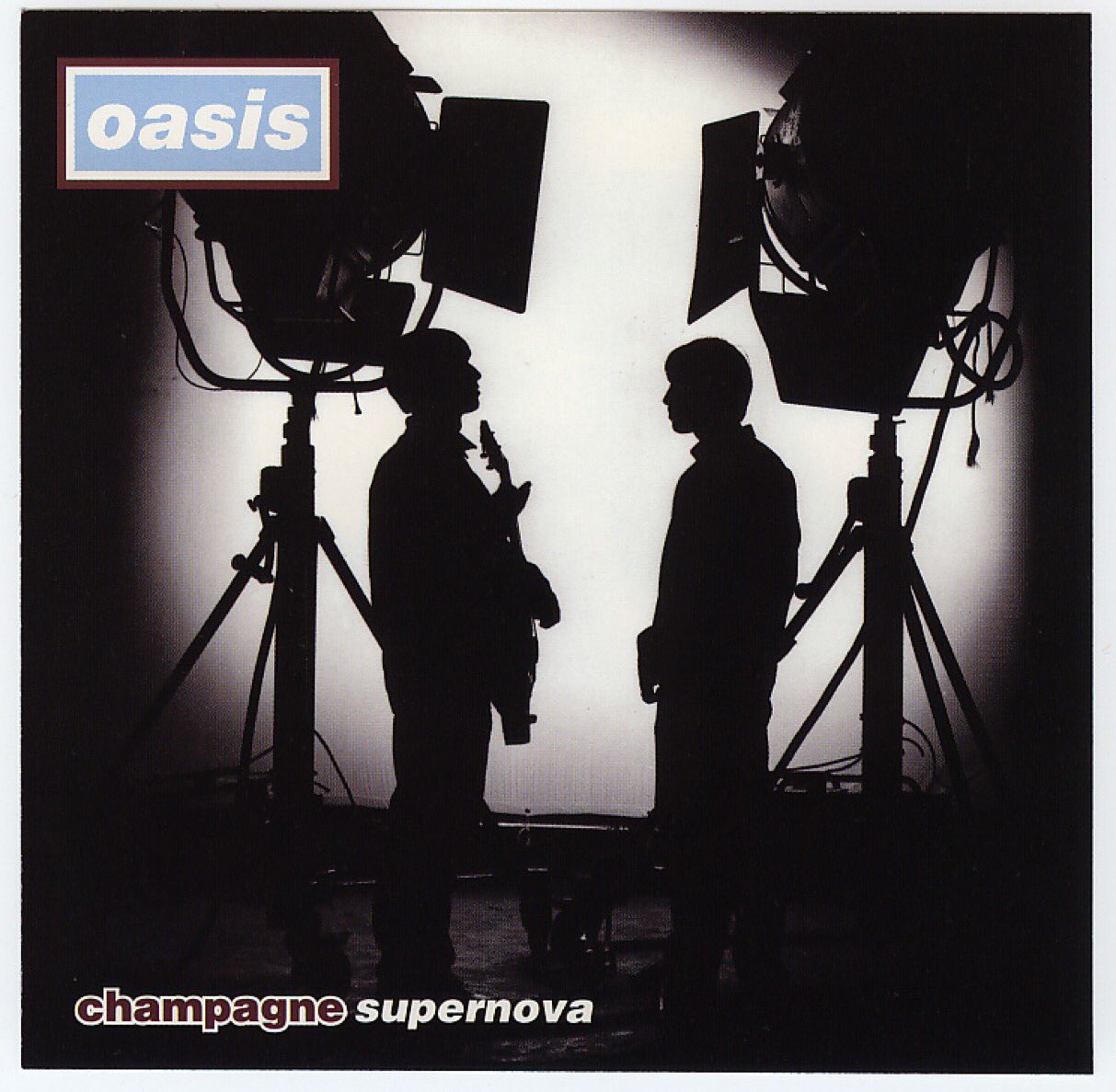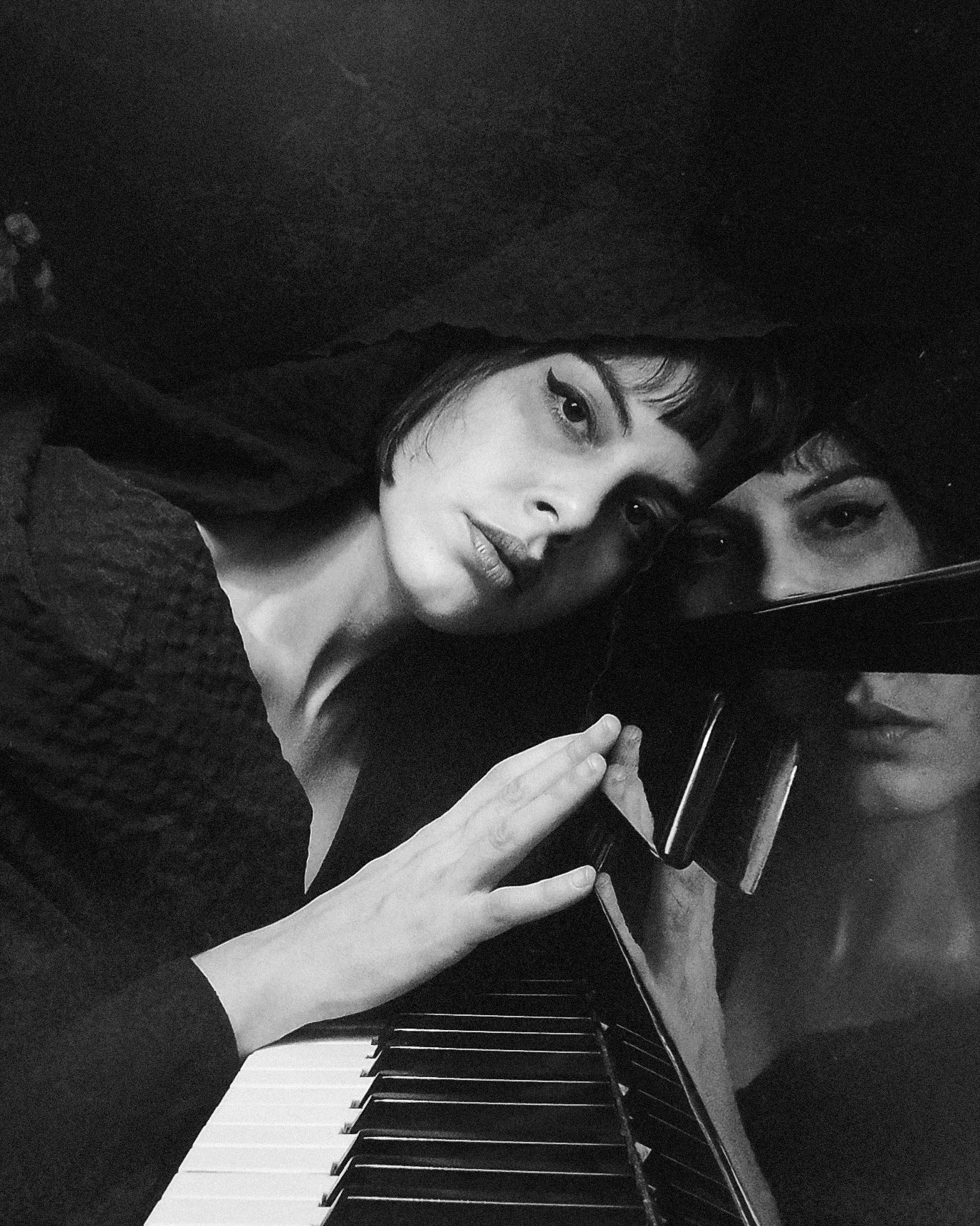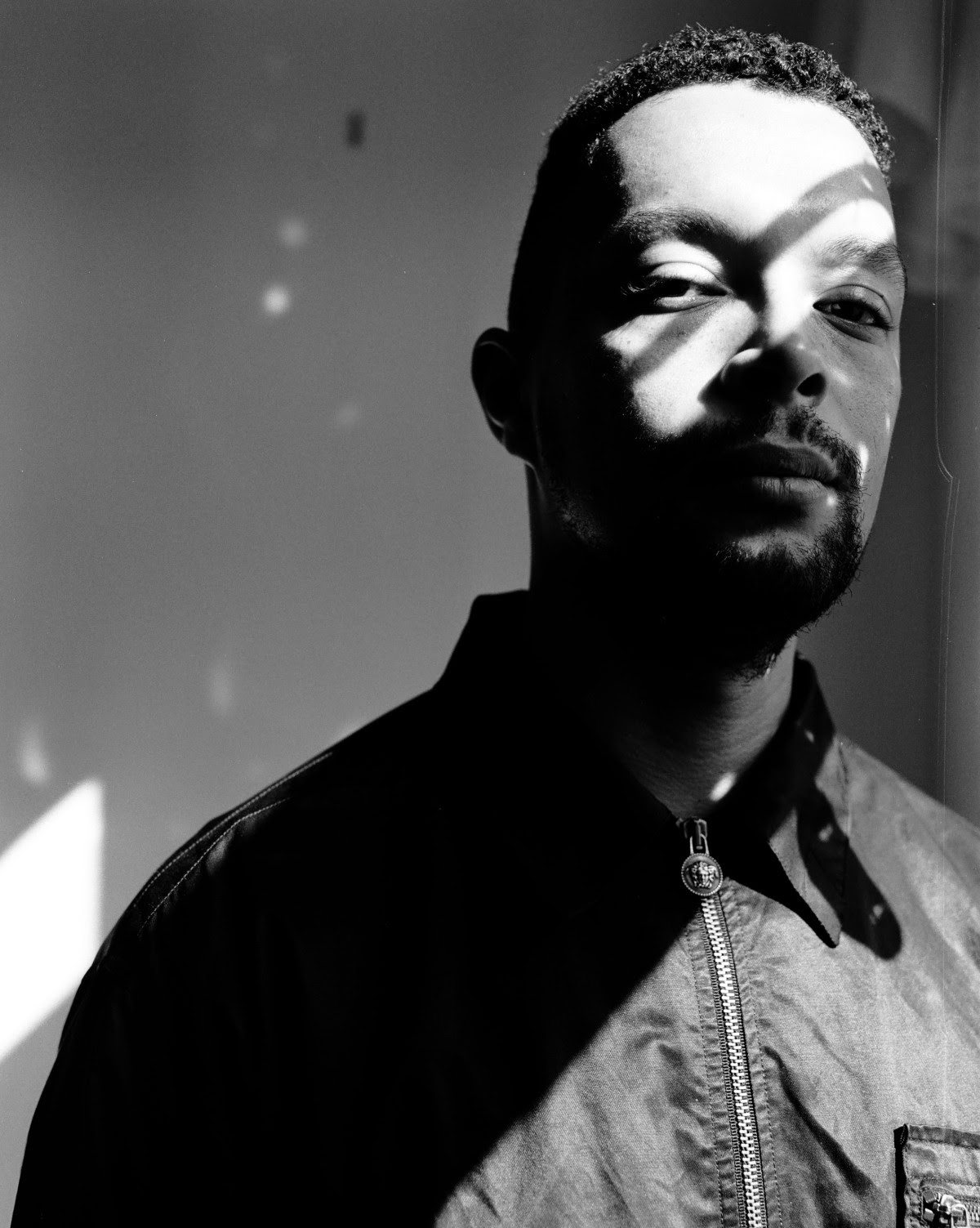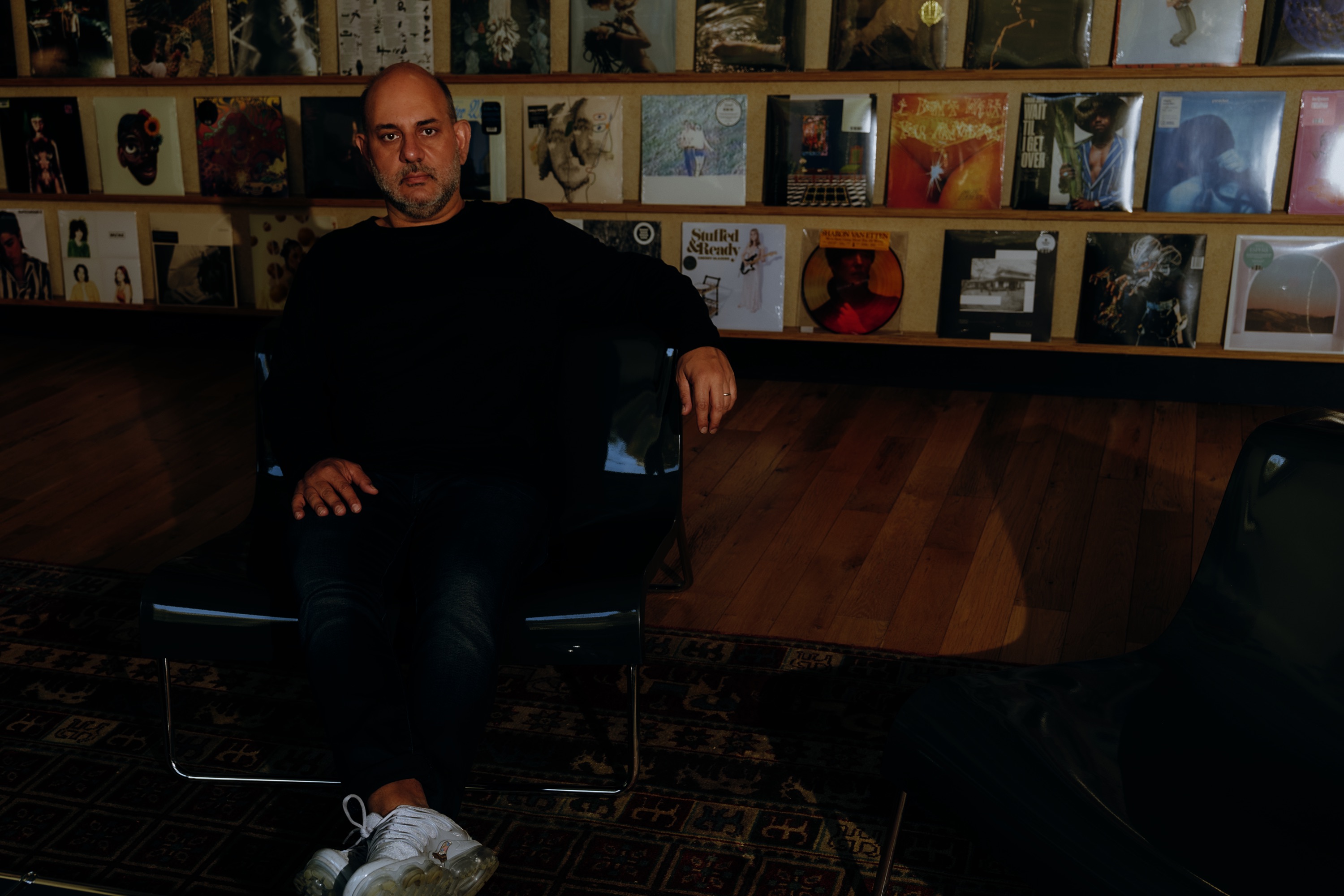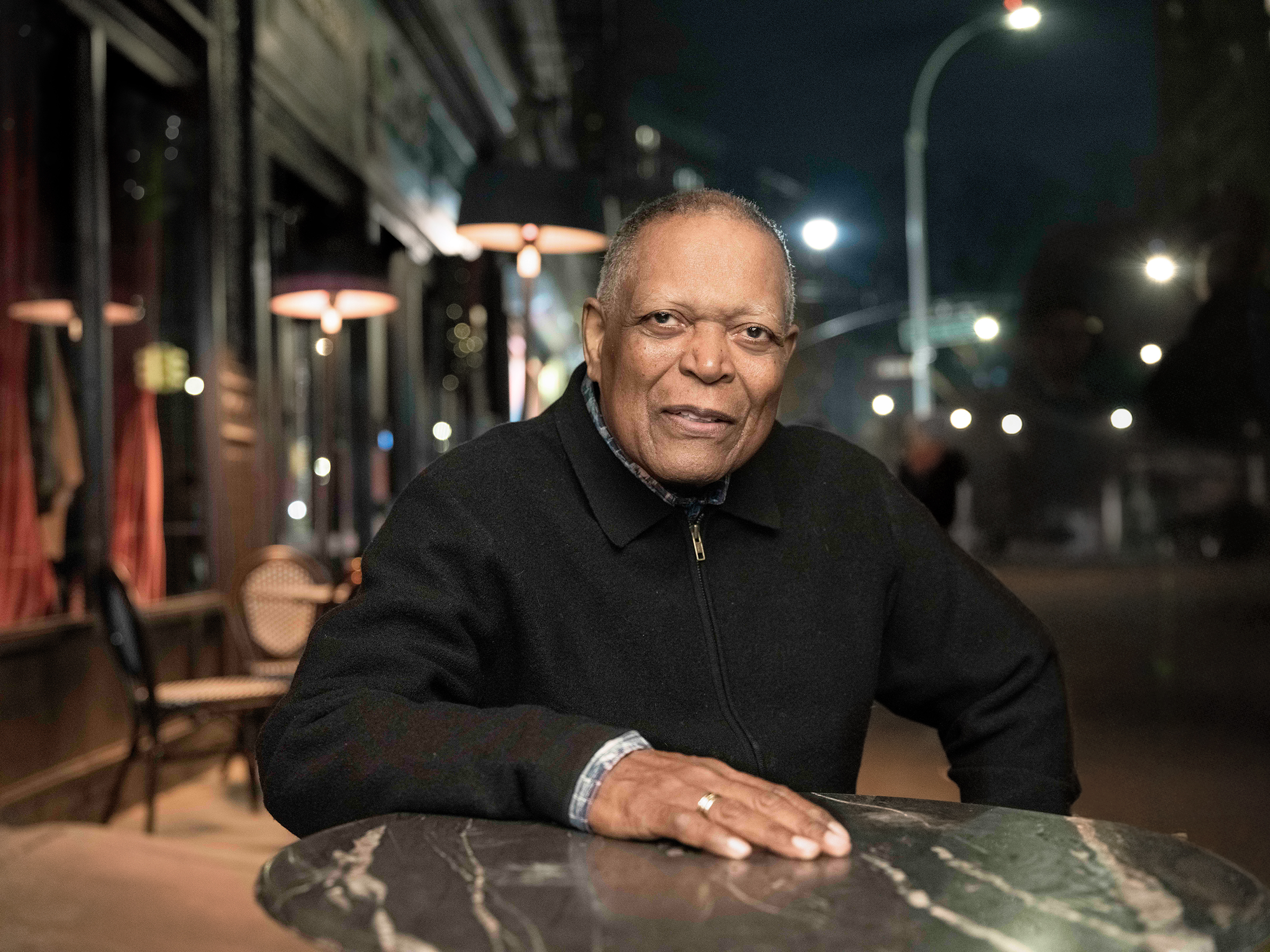June 6, 2015
- STAYED AT #1:1 Week
In The Number Ones, I'm reviewing every single #1 single in the history of the Billboard Hot 100, starting with the chart's beginning, in 1958, and working my way up into the present. Book Bonus Beat: The Number Ones: Twenty Chart-Topping Hits That Reveal the History of Pop Music.
It's a cheap tactic -- using a remix to push a previously-released song up the charts -- but cheap tactics sometimes work. They work especially well when multiple big names are involved. It doesn't generally matter whether the remix is any good; it just matters that it generates a little extra attention. That's the game that Katy Perry played in 2011, when she got Kanye West to rap on a remix of her track "E.T.," and it was enough to propel that song to #1. Four years later, Taylor Swift did something remarkably similar with a diss track aimed at Katy Perry.
The beef between Taylor Swift and Katy Perry is all based on allegation and implication; we've never gotten official confirmation that these two pop stars were going at each other's necks. They didn't use each other's names on songs or in interviews, and they've left the particulars of their problems up to fans and journalists, who have happily taken the bait. Nevertheless, there are few things that the public loves more than celebrities getting publicly pissy about one another. "Bad Blood" was never one of the best songs on Taylor Swift's blockbuster album 1989, but it was the brattiest, and that was good for a certain level of interest. Swift generated more interest in the track by getting a ton of her celebrity friends to show up for a megabudget video shoot and by recruiting Kendrick Lamar, the most gifted rapper of his generation and the man who would later become known as a true king of disrespect.
In the grand arc of Kendrick Lamar's career, Taylor Swift's "Bad Blood" remix is a detour, a curiosity. Earlier this year, when Kendrick got into his instantly infamous feud with Drake -- a subject that'll come up in future columns -- Drake tried to use Kendrick's participation in a Taylor Swift remix as ammunition against him. Drake asserted that Kendrick liked to hold himself up as a paragon of Black artistry while still jumping to work with pop singers at his label bosses' behest: "Then we need a verse for the Swiftiessss/ Top said drop, you better drop and give him fiftyyyy." ("Push Ups," the Drake diss track in question, peaked at #17.) Kendrick never seemed embarrassed about his participation in the "Bad Blood" remix, and his efforts did give him a #1 hit. Still, it's pretty clear that the "Bad Blood" remix is nowhere near the best that Taylor Swift or Kendrick Lamar had to offer.
Collaborations like this one are not organic. If anything, they're weird and artificial by design. You're supposed to marvel at the confidence that it must take for these people to work together. It's not a behind-the-scenes move. Fans know what's up with a song like that. We know that these people have come together through sheer desire to win, not through any deep artistic drive. Taylor Swift and Kendrick Lamar were mutual admirers, and they came together at a crucial time for both. The resulting track is an ugly, stitched-together Frankenstein thing, but that's what can happen when the narrative overwhelms the music. In this case, there's a whole lot of narrative at work.
Taylor Swift and Katy Perry didn't always have beef. The two of them both became stars in 2008, and I remember seeing video of Swift euphorically lip-syncing Perry's song "Hot N Cold" around that time. Two years later, Perry popped up onstage at a Swift show in Los Angeles, and they sang that song together. ("Hot N Cold" peaked at #3. It's a 9.) At the time, Swift was still in the Nashville country ecosystem, so the two artists weren't exactly competing with each other. For a few years, they said nice things about one another at every opportunity. That changed, and it apparently had something to do with Perry hiring Swift's backup dancers just before a tour started.
To hear Taylor Swift tell it, that backup-dancer thing was a serious issue. In a 2014 Rolling Stone cover story, Swift declined to name the female peer who'd inspired "Bad Blood," but she left a breadcrumb trail:
For years, I was never sure if we were friends or not. She would come up to me at awards shows and say something and walk away, and I would think, "Are we friends, or did she just give me the harshest insult of my life?"... [But then] she did something so horrible. I was like, "Oh, we're just straight-up enemies." And it wasn't even about a guy! It had to do with business. She basically tried to sabotage an entire arena tour. She tried to hire a bunch of people out from under me. And I'm surprisingly non-confrontational -- you would not believe how much I hate conflict. So now I have to avoid her. It's awkward, and I don't like it.
Swift wanted to make sure people knew that "Bad Blood" was "not about a guy." Swift and Perry had both dated John Mayer, which presumably didn't help anything, but the "sabotage an entire arena tour" thing was Swift's big issue. Internet sleuths soon figured out that three backup dancers did indeed leave Swift's employ to work for Katy Perry. Given what we know about how seriously Swift takes her touring operation, it makes sense that this would bother her way more than anything romance-related. I can't quite fathom how upsetting it must be to lose three backup dancers to a competitor, but then I've never attempted to stage an arena tour.
When Taylor Swift wrote "Bad Blood," she intentionally kept its lyrics vague. She told Rolling Stone, "My intent was not to create some gossip-fest. I wanted people to apply it to a situation where they felt betrayed in their own lives." In its original album-track form, "Bad Blood" is a pretty generic backstabber call-out: "Band-aids don't fix bulletholes/ You say sorry just for show/ If you live like that, you live with ghosts." It used to be mad love, but now they've got bad blood, hey.
Taylor Swift co-wrote "Bad Blood" with Max Martin and Shellback, her collaborators on all her previous #1 hits, and it's got the same earwormy intensity as all those hits. When 1989 came out, the thing that struck me most about "Bad Blood" was that it had the same drum pattern as Clipse's 2002 drug-rap anthem "Grindin'." ("Grindin'" peaked at #30.) People thought I was crazy for that one. The "Grindin'" drums are an elemental force that sounded alien when they first arrived. It's not like Taylor Swift sings over a "Grindin'" sample on "Bad Blood," and Max Martin and Shellback's drums are way lower in the mix. Still, I maintain that the actual pattern is pretty much the same and that the echo was probably intentional. Maybe I shouldn't have gotten excited about that connection, but when something reminds me of prime Clipse, I have trouble thinking about anything else.
The "Bad Blood" drums are nowhere near as big as the "Grindin'" ones, but they're still plenty big. On "Bad Blood," Martin and Shellback layer evocative synthpop hums and flutters over those drums, and Swift belts out her lyrics with accusatory force. She sings about being wounded, but she doesn't sound wounded. She doesn't really sound defiant, either. Instead, there's a nyah-nyah playground-argument viciousness to the track, which really pounds its hook into your skull. As a result, it threatens to became outright annoying, just like Swift's 1989 lead single "Shake It Off." The levels of craft are still off the charts. "Bad Blood" is a catchy, energetic, immediate track, and it can lodge itself in your head for days at a time. But it doesn't have the same depth and cleverness of her best 1989 tracks. At a certain point, it gets oppressive.
Taylor Swift didn't release "Bad Blood" as a single until she'd already dropped three other 1989 tracks. By the time "Bad Blood" got its push, the album had already been out for six months, and it had sold millions. "Bad Blood" was not a new song, and we were getting into a point in chart history where record labels couldn't just revive an album cycle by pushing a deep cut to radio or commissioning a video. Instead, Swift needed to do something with "Bad Blood" to make it feel new, and that's what she did. Enter Kendrick Lamar. I could talk about that guy all day. In fact, that's what I'm about to do. Get comfortable.
Kendrick Lamar wasn't a huge pop-chart presence before the "Bad Blood" remix. He had no top-10 Hot 100 entries of his own, and he'd only ever rapped on one major hit. He'd actively pushed against his own stardom, making demanding and self-consciously anti-commercial moves. Critics loved him. Rap audiences loved him and loved arguing about him. A couple of months before he showed up on the "Bad Blood" remix, Kendrick released a thorny, intense record that might be the general-consensus album of the decade. Rapping on a Taylor Swift remix was a counterintuitive move for Kendrick, but it wasn't exactly his first.
Kendrick Lamar Duckworth was born in Compton, California, and his parents named him after the Temptations' Eddie Kendricks. (When Kendrick was born, Atlantic Starr's "Always" was the #1 song in America.) Kendrick's working-class parents moved from Chicago to Compton a few years before he was born, and he grew up in the shadow of poverty and violence, witnessing murders and riots when he was still a child. Kendrick was a smart, quiet kid with a bad stammer and a shy demeanor. His teachers recognized him as a promising writer, but his life was never entirely stable.
In high school, Kendrick Lamar fell in love with longtime partner Whitney Allford and with rap. He'd rap in lunchroom cyphers and battles, and teenage friend Dave Free became his hypeman and manager. Free, now Kendrick's business partner, introduced Kendrick to Anthony "Top Dawg" Tiffith, a street figure and rap producer who was getting ready to launch his TDE label. Top Dawg, impressed by Kendrick's freestyle skills, signed Kendrick and added him to a roster that included three more promising rappers from the greater LA area: Jay Rock, Schoolboy Q, and Ab-Soul. Eventually, the four of them became a loose collective known as Black Hippy.
In his early days, Kendrick Lamar took the rap name K.Dot, and he released a series of mixtapes while he was still in high school. He signed an early Def Jam deal in 2006, but it didn't go anywhere, and the label dropped him a couple of years later. In the meantime, Kendrick rapped on his friends' records and toured as Jay Rock's hypeman, first with Compton star the Game and then with Kansas City indie-rap pillar Tech N9ne. Eventually, he dropped the K.Dot name, though the nickname endures, and he started rapping as Kendrick Lamar. This was rap's so-called blog era, and everyone who heard individual Kendrick tracks could tell that he was scarily talented.
Young Kendrick Lamar talked tough, and he sounded comfortable among more seasoned street-rap types like Jay Rock. But he came off more as an inheritor of West Coast speed-rap intellectuals like the extended Project Blowed crew. He rapped in dense tangles of words, throwing out allusions and ideas at a dizzy pace. You could hear the young man's mind consistently whirling, and you had to listen fast to keep up. Kendrick's music never seemed terribly commercial, but he attacked tracks with such hungry energy that he sounded like a star anyway.
Kendrick's 2010 mixtape Overly Dedicated attracted Dr. Dre's attention, and the news that Dre was in any way involved with Kendrick added to the buzz. In 2011, Kendrick was part of a XXL Freshman class that also included Meek Mill, YG, and Mac Miller. (Jay Rock was a XXL Freshman the previous year.) That same year, Kendrick also released Section.80, his first proper studio album, and I reviewed it for Pitchfork. It was slightly messy and unformed, but the level of talent on display was just overwhelming. I moved to Charlottesville in October 2011, and I saw Kendrick play a college show at UVA a few weeks later. He went onstage in a small and half-full cafeteria-type room with dreadful acoustics, and he was just entrancing. He performed with absolute mastery and intensity, and the few hundred college kids in the room knew every word to every Section.80 track. Something big was happening.
Drake, an artist who will be in this column many times, took an instant shine to Kendrick Lamar. He gave Kendrick an interlude to himself on the 2011 album Take Care; it's mostly Kendrick wrestling with the idea of rapping on a Drake record. Then Kendrick and fellow blog-buzz rap figure A$AP Rocky opened Drake's Club Paradise tour. In 2012, Drake and Kendrick both appeared alongside 2 Chainz on Rocky's big single "Fuckin' Problems," and Kendrick's closing verse was the kind of vivid, energetic, out-of-control barrage that lets you know a major new star has arrived. ("Fuckin' Problems" peaked at #8, and it's still Rocky's highest-charting lead-artist single. It was also Kendrick's only top-10 hit before "Bad Blood." It's a 9.)
Soon enough, Dr. Dre really did sign Kendrick Lamar. Kendrick's major-label debut Good Kid, m.A.A.d. City came out late in 2012, just as "Fuckin' Problems" was hitting. Kendrick actually released Good Kid, m.A.A.d. City on the same day that Taylor Swift released Red, and I remember wrestling over the question of which should be Album Of The Week that week. I picked Kendrick and never regretted it. Good Kid was an instant classic. This week, Good Kid sits at #42 on the Billboard album chart, a few spots below another Kendrick album. Good Kid has been on that chart for 610 weeks, on some Dark Side Of The Moon shit.
Good Kid, m.A.A.d. City made the case that Kendrick Lamar was a star, both in the critical and commercial sense. Lead single "Swimming Pools (Drank)" became Kendrick's first Hot 100 hit, peaking at #17. Kendrick once again sounded perfectly at home next to Drake on the #26 hit "Poetic Justice." In the album's aftermath, Kendrick opened a Kanye West arena tour and got nominated for a bunch of Grammys. (He lost most of them to Macklemore.) In 2013, Kendrick made his intentions clear with a guest verse on Big Sean's song "Control." There, Kendrick named a bunch of his peers and said that he loved them but that he wanted to destroy all of them. One of the people he named was Drake, and that's probably the moment that two of their generation's most important rappers started the long cold war that continued to simmer for more than a decade before finally exploding this year.
Like so many generationally important artists before him, Kendrick Lamar was not especially comfortable being known as a generationally important artist, and he put that anxiety into his 2015 album To Pimp A Butterfly. It's a rich, vivid record, both lyrically and musically. Kendrick brought in jazz players and adventurous producers to create a cluttered, claustrophobic sonic landscape, and he rapped with poetic precision about race in America and about his own shortcomings. This was a classic anti-stardom move, and the album sold way less than Good Kid, m.A.A.d. City. Seven To Pimp A Butterfly tracks made the Hot 100, but none of were true crossover hits. (Lead single "i," the highest-charting of them, peaked at #39.) But To Pimp A Butterfly was almost universally regarded as a major work when it first came out, and its reputation has only grown since. Two months after the LP's release, Kendrick Lamar was on "Bad Blood."
Before the "Bad Blood" remix, Kendrick Lamar and Taylor Swift were already saying nice things about each other in public. Kendrick rapped over the "Shake It Off" instrumental in a radio-station freestyle. When the 1989 first-week sales numbers came out, Swift celebrated by posting a video of herself lip-syncing Kendrick's Good Kid, m.A.A.d City banger "Backseat Freestyle." This could've been a long-tail rollout thing, but I prefer to think that these are simply two very gifted artists who respect each other.
The "Bad Blood" remake came out at the peak of Taylor Swift's "squad" era -- the moment when she was constantly posting photos of herself along time all the famous and glamorous women that she's befriended. She hyped up the remix with social-media posters of many of these friends, with Kendrick as the token man. Before the remix came out, people didn't realize it would actually have Kendrick rapping on it. With a lot of these quickie cash-in remixes, we just get a short, low-effort verse from the guest-rapper hastily stapled onto the bridge. "Bad Blood," to its credit, is not that, though it might've been better if it was. Instead, an associate of Max Martin came in to rework the track, so it's remix in the classic sense.
Ilya Salmanzadeh, known professionally as just plain all-caps ILYA, was another Swedish Max Martin protege, a producer who was born in Iran and moved to Denmark and then Sweden as a kid. ILYA got his start producing for the Swedish singer Darin Zanyar, and he worked with Lady Gaga collaborator RedOne, co-writing and co-producing the Congolese-Swedish singer Mohombi's 2010 Nelly collab "Miss Me." Over the next few years, ILYA worked on tracks from the Lonely Island, Fifth Harmony, and Cher Lloyd. Before long, ILYA was closely allied with Max Martin, working on some big Ariana Grande hits. ILYA's work will appear in this column again.
On the "Bad Blood" remix, ILYA added a bunch of bass noises and echoing vocals, bringing the song an extra layer of EDM sounds that felt a bit dated in 2015. "Bad Blood" was already pretty sub-par, as Taylor Swift songs go, and those adjustments worked to make it actively unpleasant. Maybe ILYA's work on the album foreshadowed some of the more futuristic sounds that Swift would play with on her next album, but they don't really work for me. On the plus side, the "Bad Blood" remix does make sure to integrate Kendrick Lamar, though he and Swift still sound like they're taking part in two entirely different tracks.
There's some fun, I guess, in hearing the random collision of Taylor Swift and Kendrick Lamar. The cluttered, simplistic track doesn't do Kendrick any favors, but he's pretty comfortable even on overproduced beats. Kendrick never says anything too memorable on "Bad Blood." He doesn't rap about Katy Perry, which would've been pretty funny. Later on, Kendrick said that he didn't know anything about a Swift/Perry feud: "That's far beyond my concern. I have to stay away from that, for sure. That's some real beef." Instead, he raps in vague terms about a personal rift. There's a prevailing fan theory that virtually every song in Kendrick Lamar's entire oeuvre is really about Drake, and I guess "Bad Blood" fits the criteria, too: "Take time and erase you, love don't hear no more/ No, I don't fear no more/ Better yet, respect ain't quite sincere no more." (Wop wop wop wop wop Dot fuck 'em up.) Kendrick once went on the record that he was not rapping about Drake on "Bad Blood," but he used to say that all the time, and we now see how that turned out.
In his "Bad Blood" verses, Kendrick Lamar mostly plays word games: "We was OG like DOC, remember that?/ My TLC was quite OD, ID my facts." He quotes himself from "Backseat Freestyle," too. I guess that "Bad Blood" remix is kind of proof of concept -- further evidence, if anyone needed it, that Kendrick Lamar's tricky and off-kilter flow could work as pop music in the right context. But when his voice comes together with Taylor Swift's, they never really sync up. There is simply no on-record chemistry to be found.
Really, the "Bad Blood" remix seemed like an excuse for Taylor Swift to make a big-budget mini-blockbuster video. Working with "Blank Space" director Joseph Kahn, Swift tells a story mostly through effects-heavy action setpieces and quick introductions of characters who don't actually do anything. In the beginning, we see Swift and her real-life best friend Selena Gomez, someone who will eventually appear in this column, breaking into a heavily fortified office building to steal a briefcase. Swift does a headscissors takedown, while Gomez acrobatically breaks some chump's arm, which is fun. But when they're about to steal a MacGuffin briefcase, Gomez kicks Swift out a window -- the old Shawn Michaels/Marty Jannetty betrayal -- and leaves her lying on a crushed car.
The next three and a half minutes are mostly character introductions, and they work as a time-capsule parade of people who were famous enough to make cameos in a Taylor Swift video but not too famous to make a cameo in a Taylor Swift video in 2015. There's Lena Dunham smoking a cigar, Ellie Goulding lip-syncing while shooting a bazooka, Zendaya throwing a knife at a teddybear, Paramore's Hayley Williams flipping over some ninja stars. I don't recognize all the women in the video, but Wikipedia tells me that the ones I don't know are mostly Victoria's Secret models. Near the end, TV veterans Mariska Hargitay and Ellen Pompeo strut past the camera, and Cindy Crawford makes a big entrance, thus making me wish I was watching the "Freedom '90" video instead. Finally, two armies of famous women meet each other on the field of battle, but the video ends just when they're about to fight -- a climax aborted, just like Infinite Jest.
I think the "Bad Blood" video is pretty dumb, but it got a ton of hype and racked up 20 million YouTube views in its first day -- the most ever at the time. Thanks to YouTube and downloads, the song spent a week at #1, briefly interrupting the long reign of Wiz Khalifa's "See You Again." "Bad Blood" won Video Of The Year at the VMAs, and the single eventually went platinum six times over. At this point, "Bad Blood" is probably not anyone's favorite Taylor Swift song. It's part of her Eras Tour setlist, and I liked the big jets of red flame that shot up all around the stadium when she hit the chorus. She does the album version live, and I don't think Kendrick has ever performed it with her. But when she sings that song, it's fan tradition to quote one of Kendrick's lines -- "you forgive, you forget, but you never let it... go!" -- on the bridge.
Taylor Swift did not pull a Kendrick Lamar on Katy Perry. If the feud had a winner, it was clearly Taylor Swift. But Perry's star was already on the wane anyway, so Swift doesn't get to claim dragonslayer status. While "Bad Blood" was blowing up, Perry mostly responded via subtweet. She also released a perfume called Mad Love; you see what she did there. In 2017, Perry finally fired back by teaming up with Nicki Minaj, an artist who will eventually appear in this column, on the similarly name-free diss track "Swish Swish." The video had its own parade of celebrity cameos, but the song stalled out a #46 -- an unambiguous pop-chart victory for Swift, though "Swish Swish" might honestly be the better song.
In 2018, as Taylor Swift was starting her Reputation tour, Katy Perry sent her a handwritten note with a literal olive branch. They officially squashed things when Perry showed up in Swift's video for the 2019 track "You Need To Calm Down." (That song peaked at #2. It's a 4.) Earlier this year, Perry went to an Eras Tour show in Australia. She posted a photo of her and Swift posing together and a video of herself acting mock-surprised at "Bad Blood."
I tend to think of the "Bad Blood" remix as a misbegotten cultural moment, one that doesn't remotely hold up years later. Last year, Taylor Swift released her Taylor's Version 1989 re-record, and I was genuinely shocked to see that she got Kendrick Lamar to come back into the studio and redo his verse as a bonus track. On Twitter, Swift wrote that it was "surreal and bewildering" that he agreed to come in and help with the project, and I agree. Kendrick was long past his pop-feature period, so I can only conclude that the respect was real, though the re-recorded version doesn't sound any better than the first one. (The re-record peaked at #7, and the score for that one is the same as the one you'll see at the bottom of this column.)
"Bad Blood" was not the end of the 1989 album cycle. Taylor Swift and Joseph Kahn reunited, filming a vaguely tone-deaf video for the transcendent synthpop ballad "Wildest Dreams" in Africa, and the song peaked at #5. (It's a 10.) A few other 1989 tracks got radio pushes, though none of them made the top 10. The album eventually went platinum nine times over. It's Swift's second-biggest-selling record after Fearless. Later in 2015, Apple launched its streaming service, and it initially planned to offer a free three-month trial period without paying royalties to artists. Swift wrote the company an open letter criticizing that policy and refusing to let Apple stream her music, and the company almost immediately changed its plans and started paying royalties. Soon, Swift was appearing in Apple Music commercials.
In 2016, 1989 won Album Of The Year at the Grammys, giving Swift her second win in that category. She was the first woman ever to win Album Of The Year twice, and she's since won two more times -- more than any other artist in history. 1989 defeated, among other things, Kendrick Lamar's To Pimp A Butterfly. On her way up to accept the award, Swift stopped and gave Kendrick a hug. You can never tell with ultra-famous people, but I think that was a genuine gesture. Swift has since worked extensively with Sounwave, a producer who's closely associated with Kendrick. Jack Antonoff, Swift's main collaborator for the past decade or so, co-produced one of Kendrick's Drake disses this year. The mutual respect remains.
Taylor Swift's stadium tour for 1989 earned vast piles of money and introduced the meme of Swift welcoming various random celebrities to the stage. As the album cycle finally wound down, Swift scored another big hit. For the Fifty Shades Darker soundtrack, she and Zayn, an artist who will eventually appear in this column, contributed the duet "I Don't Wanna Live Forever," which peaked at #2 in 2016. (It's a 6.) Under a pseudonym, Swift also co-wrote then-boyfriend Calvin Harris' Rihanna collab "This Is What You Came For," which reached #3. (It's an 8.) She also wrote the country group Little Big Town's 2016 single "Better Man," a massive country hit that peaked at #34 on the Hot 100. Even in between albums, she was rolling.
Amidst all that success, Taylor Swift also reignited her dormant feud with fellow hitmaker Kanye West. This had some long-tail effects, and it'll come into play in future columns. Kendrick Lamar, meanwhile, continued to record occasional guest appearances for big pop stars for the next year or two. If Maroon 5 needed a verse, Kendrick would make it witty. ("Don't Wanna Know," Maroon 5's 2016 Kendrick collab, peaked at #6. It's a 5.) Despite what Drake might've wanted, this did not affect Kendrick's legend one bit. Kendrick Lamar racked up plenty more hits in the years after "Bad Blood," and one of his songs is projected to return to #1 later today. We'll see more of him in future columns.
GRADE: 4/10
We rely on reader subscriptions to deliver articles like the one you're reading. Become a member and help support independent media!
BONUS BEATS: Taylor Swift and the aforementioned Nicki Minaj got into a brief online snit when Nicki's "Anaconda" video didn't get as many VMA nominations as "Bad Blood." ("Andaconda" peaked at #2. It's an 8.) At the 2015 VMAs, they buried the hatchet by singing together, doing Nicki's "The Night Is Still Young," with a big of "Bad Blood" at the end. Here's that performance:
("The Night Is Still Young" peaked at #31. Nicki Minaj will show up in this column, but it'll be a while.)
BONUS BONUS BEATS: Drake has come up in this column a bunch of times, and he'll obviously get plenty of future columns to himself. Given that Drake is Taylor Swift's only real competition for millennial pop-star dominance, it's a little surprising that they've never worked together. The closest that they've come, as far as I can tell, is the 2016 Apple Music campaign where they lip-synced each other's songs in commercials. Here's Drake dancing around to "Bad Blood" in his ad:
The Number Ones: Twenty Chart-Topping Hits That Reveal The History Of Pop Music is out now on paperback via Hachette Books. Baby, now you've got baaaad books, so buy a good one.
